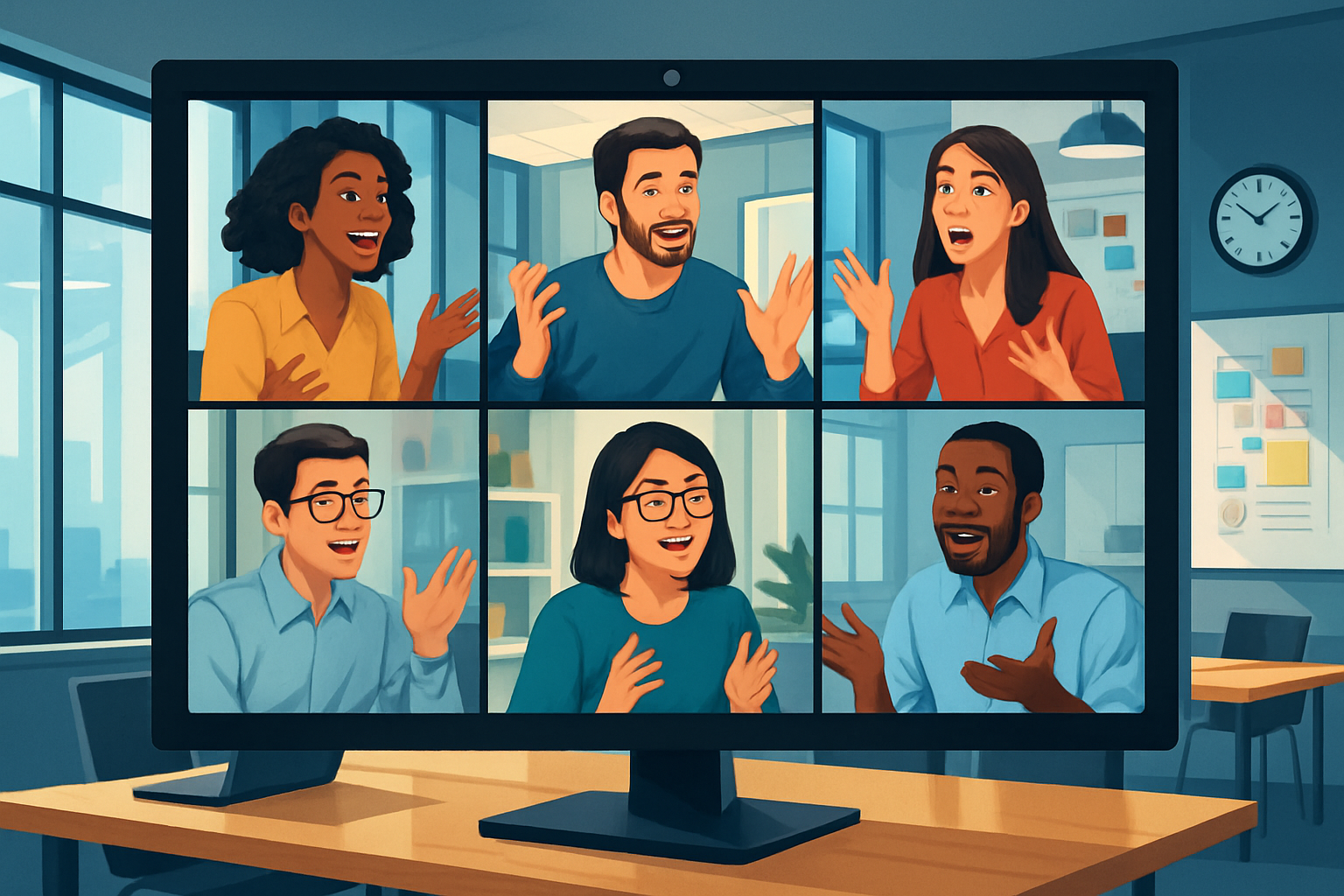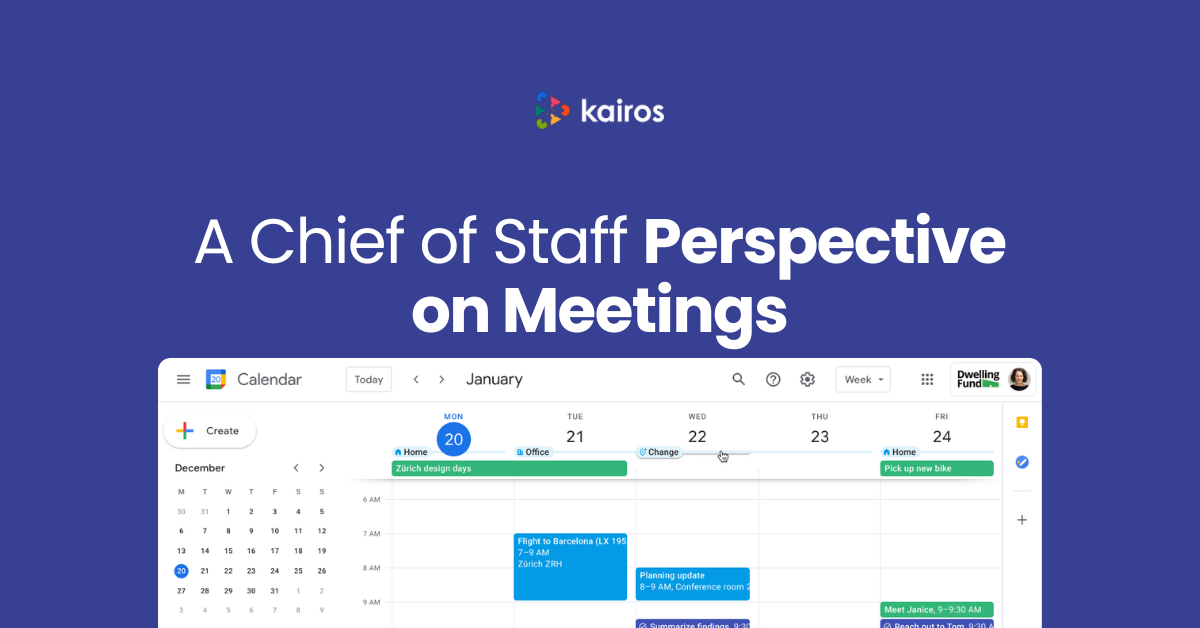5 Tips to Overcome Meeting Fatigue & Energize Your Workday
There is a particular strain of exhaustion that hits after back-to-back meetings. The kind that leaves you too tired to think, let alone focus on actual work. The number of meetings has reached all-time highs, meaning that you’re not crazy and meeting fatigue has measurably gotten worse. However, as we settle into a hybrid-remote future of work, innovative companies are taking steps to break the cycle.
Let’s dive into the reality of meeting fatigue, its causes, and actionable ways to transform your calendar chaos into productive collaboration.
What Is Meeting Fatigue?
Meeting fatigue is the mental and physical exhaustion from excessive or poorly planned meetings. It’s deeper than just being tired. It’s more akin to a cocktail of disengagement, decreased focus, and burnout.
Why Should You Care About Meeting Fatigue?
The cost of meeting fatigue goes beyond just feeling drained. It impacts employees, teams, and businesses in significant (ahem, $$) ways:
- Reduced Productivity: Studies reveal that excessive meetings can reduce productivity by up to 50%.
- Stifled Creativity: Constant interruptions from meetings limit deep thinking and innovation. Great ideas don’t happen in 30 min blocks between meetings.
- Increased Stress: The pressure to stay “on” in every meeting adds unnecessary stress to already packed schedules.
- Virtual Burnout: Too many video calls contribute to screen fatigue, eye strain, and mental exhaustion.
- Wasted Time: Poorly planned meetings with unclear objectives are often unproductive (and annoying).
If any of this resonates, it’s time to rethink how your team gathers.
Let's do the math - just for fun.
Let's say your payroll is $10M. Your team spends on average 40% of their time in meetings. (Note as you move up the payscale, we know the time in meeting only increases!)
If 33% of meetings are unnecessary, that means you spend $10,000,000 x 0.4 x 0.33 = $1,320,000 on purely unnecessary meetings.
This only accounts for the unproductive meetings - not the necessary ones! For a full breakdown, you can wander over here.
If any of this resonates, it's time to rethink how your team gathers.
How to Combat Meeting Fatigue
While meetings are a vital part of teamwork, not all meetings are necessary. Here’s how to make the ones you do have more effective:
1. Ask: Is a Meeting Really Necessary?
Before scheduling, ask two key questions:
- Does this meeting have a clear purpose?
- Does it require active collaboration?
If the answer is no, consider alternatives like email, Slack updates, or shared documents. Tools like Google Docs or Asana are great for keeping teams aligned without the need for a formal meeting.
2. Keep Meetings Short and Focused
When meetings are necessary, cap them at 30 minutes. Use clear agendas to stay on track and keep discussions efficient. Pro-tip: Always end with action items to ensure follow-through.
3. Embrace Asynchronous Communication
Asynchronous tools allow team members to contribute on their own time. Instead of gathering everyone for an update, consider using project management tools or decision documents where people can comment, vote, or collaborate independently.
4. Combat Virtual Burnout
Video meetings are uniquely tiring. Turning off your self-view on platforms like Zoom can help reduce fatigue, as constantly seeing yourself on screen adds a layer of stress. For larger groups, encourage the use of chat or polling features to keep things interactive without requiring everyone to stay on camera.
5. Use Technology to Your Advantage
Platforms like Kairos can streamline meeting workflows, from automatically capturing action items to sending follow-up reminders. This eliminates the burden of manual note-taking and ensures no detail falls through the cracks.
Review this video, where Dr. Steven Rogelberg reviews practical tips to overcome meeting fatigue.
The Role of Context Switching
One of the biggest contributors to meeting fatigue is context switching. Every time you shift gears—from a creative task to a meeting, then back to emails—you lose mental energy. Research suggests that it takes about 23 minutes to fully refocus after a distraction.
The solution? Block out time for deep work and protect it. Schedule meetings in clusters rather than spreading them throughout the day, so you can dedicate uninterrupted time to tasks that require focus.
A Smarter Approach to Meetings
Imagine this: a workday where meetings are purposeful, collaboration flows seamlessly, and your team leaves each session feeling energized—not drained. It’s possible with the right strategies and tools.
With Kairos, you can reclaim your productivity by:
- Reducing unnecessary meetings.
- Keeping sessions focused and effective with built-in agendas and collaboration tools.
- Minimizing stress and fatigue with automated follow-ups and action-item tracking.
Ready to Beat Meeting Fatigue?
Meeting fatigue doesn’t have to define your workday. By rethinking how you communicate and leveraging smarter tools like Kairos, you can create a more balanced, productive schedule.
Ready to take the first step? Try Kairos today and start using meetings to drive real results.
.png)

